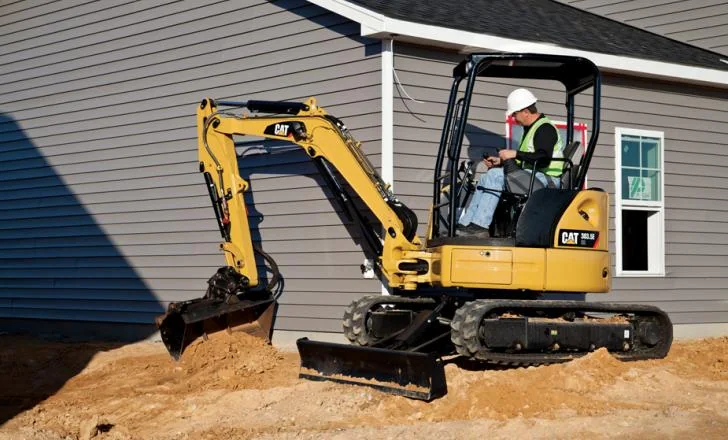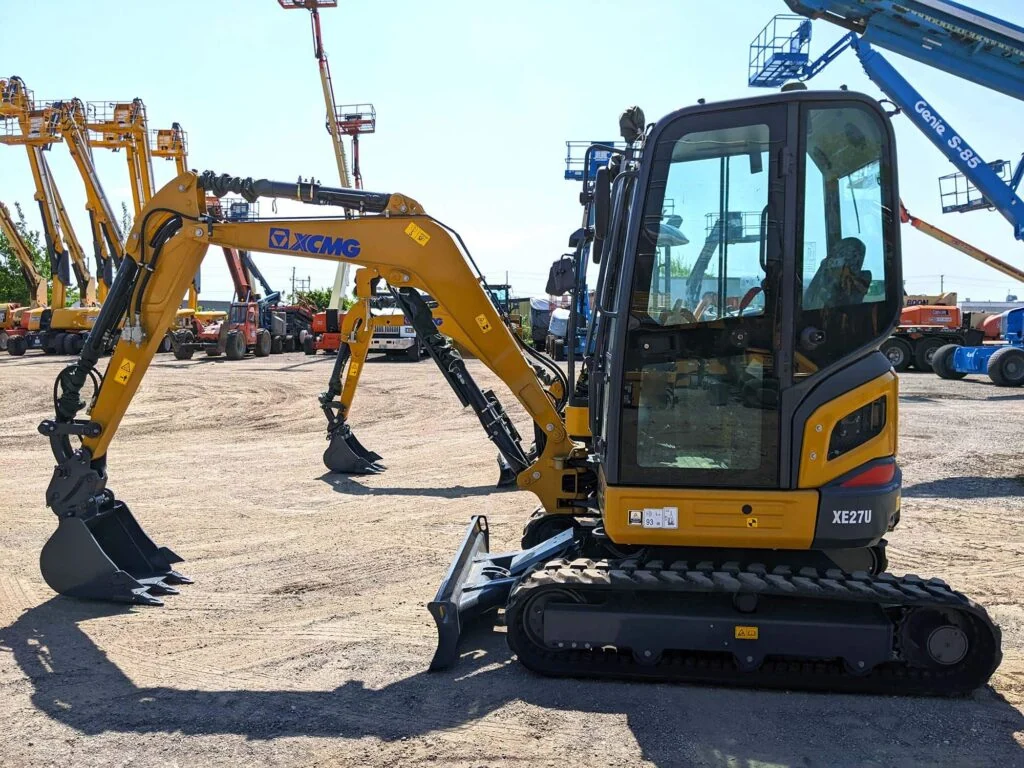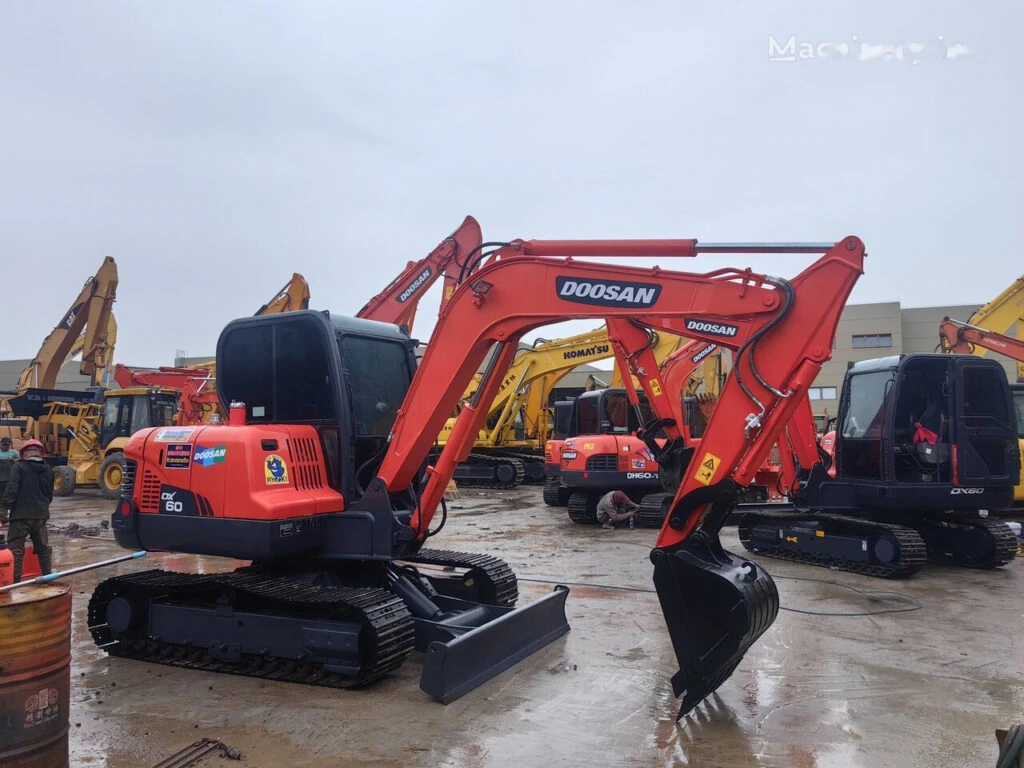So how to operate excavator when you are starting out as an excavator operator, learning how to use an excavator the right way is essential for safe operation as well as efficient and long-life operation of the machine. Doing it the right way will keep you out of trouble and out of the shop.
If you’ve recently bought an excavator, you might feel overwhelmed by the complexity of its controls. This guide on how to operate an excavator will walk you through the basics, safety tips, and common mistakes that new operators should avoid.
Now that you know why it’s important to master the operation of an excavator, let’s break down the key things you need to know to get started.

Table of Contents
Toggle1,What are the Key Controls on an Excavator?
One of the first things you need to understand when you are learning how to operate an excavator is the key controls for an excavator. Every control lever, button, and pedal operators need to touch is there for a reason and designed to help them dig more efficiently and more safely.
The key controls on an excavator are the hydraulic control levers, foot pedals, and joystick on the right of the machine. These control everything from the movement of the machine to the digging power of the bucket. The better you are with these controls, the more you can move with precision and confidence.
The main control components you need to familiarize yourself with include the boom and arm levers, the swing control, and the throttle. The foot pedals control the speed and direction of the tracks. Let me break this down for you real fast.
| Control Component | Function | Description |
| Boom Lever | Controls the lifting and lowering of the boom | Allows the boom to extend and retract. |
| Arm Lever | Moves the arm of the excavator | Helps in digging, reaching, and unloading materials. |
| Swing Control | Moves the cab of the excavator | Rotates the entire machine for better maneuverability. |
| Foot Pedals | Controls the movement of the tracks | Forward, reverse, and turning directions. |
| Throttle | Regulates engine power | Adjusts engine speed for various tasks. |
The better you know and are comfortable operating these controls, the better and more safely you will be able to operate an excavator with no mistakes because you know exactly what you’re doing.
2,How to Safely Operate an Excavator for the First Time?
Operating an excavator for the first time can be a little daunting, but know this: the number one reason you need to know is how to operate an excavator safely. You don’t want to kill yourself. You don’t want to kill somebody else. You don’t want to tear up or break the equipment. From understanding your environment to operating the controls, learning how to operate an excavator safely is always front and center in your thought process.
Safety is number one when you’re learning how to operate an excavator, especially for those new to the machine. Every time you plan to get on an excavator, always check your machine out, wear the appropriate personal protective gear, and get to know what’s beneath and behind you in the area you plan to work. Run through your safety checklist, and you won’t be surprised by kids racing up to you or any other potential accident waiting to happen on your job site.
Before starting the excavator, make sure to check out key components like the hydraulic system, engine oil levels, and fuel. Also, make sure nothing is in your way in the area where you’re working. Here’s a quick list for you:
| Safety Check | Purpose | Description |
| Hydraulic System Check | Prevents leaks and pressure failure | Ensure that the hydraulic fluid is full and there are no leaks. |
| Engine Oil Check | Keeps engine running smoothly | Make sure the engine oil is at optimal levels to prevent engine failure. |
| Working Area Inspection | Identifies obstacles and hazards | Ensure the area around you is clear of large obstacles. |
| Seat Belt | Ensures your safety | Always wear the seat belt to minimize injury risk. |
These safety checks can make sure you’re ready to rock-n-roll and begin operating your excavator without any unpleasant surprises.

3,What are the Common Mistakes New Excavator Operators Make?
Typical mistakes operators make when they are new to an excavator are avoidable. By identifying these common fail points, you can improve your skills and make the excavator last longer without incurring expensive repair bills after you destroy something from your lack of knowledge.
The most common mistakes newbies make using an excavator are running the controls too rough, not looking around the machine before you start to use it, and not respecting the limitations of the machine. Paying attention to these tricks on how to operate an excavator will go a long way in helping you avoid those pitfalls and lose some of the fear you may have when working the machine.
The most common problem that you need to look out for when starting out is to not run the machine smoothly, especially before you get used to the controls. It will tear stuff up and cause you to be inefficient. Here are some other mistakes to avoid:
| Mistake | Consequences | How to Avoid It |
| Abrupt control movements | Causes jerky operation and damage | Learn smooth, gradual control movements. |
| Ignoring the machine’s limitations | Can damage components or overstrain the machine | Understand the load capacity and avoid overworking the machine. |
| Failing to inspect the machine | Increases the risk of breakdowns | Perform daily inspections before use. |
And that is how you avoid those mistakes. You won’t be down as much, and you won’t tear up your excavator, causing it to break as much if you understand those things.
4,How to Maintain an Excavator for Longevity?
Keep your excavator running longer is the key to making money. Plus, learn many other ways you can use it. Maintenance of your equipment is crucial to the longevity of the machine and of your career stringing things together with that job.
You check the hydraulics for leaks. You check the engine oil and the fuel. Check to see nothing’s in your work area that could get torn up when you swing the machine around. Do these things, and the next thing you know, you can operate an excavator without any downtime.
Check the hydraulics to make sure they do not have any leaks. Check the engine oil level and the fuel. Nothing is around you in your work area that can get torn up when you spin that machine around. Do those things, and the next thing you know, you can run an excavator without having any downtime.
| Maintenance Task | Purpose | Frequency |
| Track Inspection | Prevents track damage and failure | Weekly |
| Hydraulic Fluid Check | Ensures smooth operation | Bi-weekly or as needed |
| Oil and Filter Change | Keeps engine running efficiently | Every 250 hours of operation |
| Air Filter Cleaning | Improves engine performance | Monthly or as needed |
The end is to prevent costly repairs and ensure your machine continues to function like a Swiss watch.

5,What are the Basic Controls for Excavators?
To operate the excavator properly, you need to know how to use the basic controls. The whole game is to use the controls so that you can move, dig, and load materials into trucks and offload trucks quickly and efficiently. Then you can become a very stellar operator.
Once you know how to use the basics, you’re ready for the next step of learning how to operate an excavator. The basics are running the hydraulic levers, the foot pedals, and the hydraulic joysticks. That’s it. Those are all the controls you have to learn to run an excavator. They let you gracefully move the machine and dig. Practice, and you’ll know how to use an excavator in yards, dirt, rock, sand, mud, or water.
Let’s break down the main components:
| Control Component | Function | Description |
| Joysticks (Hydraulic) | Control arm movement, boom, and bucket | Used to maneuver and operate the machine’s arms, boom, and bucket. |
| Throttle | Adjusts engine speed | Increases or decreases engine RPM for smoother operation. |
| Foot Pedals | Controls the tracks | Used for moving the machine forward, backward, and turning. |
Mastering these controls ensures that you are fully capable of operating an excavator effectively in any situation.
6,What Not to Do When Operating an Excavator?
When you’re first learning how to operate excavator, it’s just as important to know what not to do as it is to know the correct actions. Mistakes can result in safety hazards, equipment damage, or inefficiency.
On a Final Drive: Don’t forget to put the key back in your pocket. The best way to forget to do something is to do it just once. The drive assembly will not allow a batten to seat with the key in place. You will not be able to tighten your nuts on the batten. Don’t panic if you forget; you can wind the work out looked for the key and then wind it back in and install the key.
Here are some things you should never do when operating an excavator:
| Action to Avoid | Why You Should Avoid It | Consequences |
| Failing to secure the machine | Increases risk of accidents | Can lead to the machine moving unexpectedly. |
| Using excessive force | Damages components and the ground | Leads to mechanical failure or inefficiency. |
| Ignoring the environment | Risks safety hazards | Could lead to accidents or inefficient work. |
To avoid making these common mistakes, be sure never to fail to secure the machine properly, use excess force, or ever blindly enter an area without making sure it’s safe for the machine to operate.

7,How to Handle Excavator in Different Terrain?
This month we’ll share some more tips to help you operate an excavator successfully in different terrains. Whether you’re digging in mud, working on rocky ground, or operating on sand, knowing how to handle the machine is your key to success.
This month we’ll share a couple more chat questions and tips to help you operate an excavator successfully in different terrains. Whether you’re working in mud, rocky ground, or sand, knowing how to properly handle the machine is the key to success.
This month we’ll share a couple more chat questions and tips to help you operate an excavator successfully in different terrains. Whether you’re working in mud, rocky ground, or sand, knowing how to properly handle the machine is the key to success.
| Terrain Type | Recommended Action | Key Considerations |
| Rocky Terrain | Use caution, reduce speed, and monitor stability | Watch out for sudden movements or shocks. |
| Sandy Terrain | Avoid sudden turns and use low speed | Tracks may sink; control speed to prevent tipping. |
| Muddy Terrain | Use additional equipment for traction | Ensure the excavator is not bogged down. |
| Sloped Terrain | Operate on the slope’s lower end for stability | Keep the cab’s weight distribution in check. |
When you are on steep terrain, short, sharp, jerky movements are what you want. When you push a lever abruptly, it increases your speed, so you speed up equipment on the downhill side. This same application would not be appropriate working around a gas line on flat terrain. In a straight flat p ar Throughout ology is, “If you can’t go in the direction you want. Your movIt is also good to kick and thrash your way through a swampy area. Conversely, calmly walking with slow, controlled movement in a straight line is the way to get what you want when you are after a deer or raccoon in a cornfield.
Swirling doesn’t worse to When it comes to your operation, you need to build a path as directly and quickly as you can to get to whatever it is you are looking for. If the terrain dictates you can’t go in a straight shot path, then build a path to get around obstacles. But the rule is to find the quickest, most efficient way to get back on a straight path to where you were headed.

8,How to Operate an Excavator for Digging?
Even if you don’t spoil it, you can dig a trench faster than you can brand a calf. You can adjust how much you put into the spoil by pushing the boom out more. How you control the boom while you dig determines how much spoil ends up on the ground beside you. Use enough boom and stick to get the bucket to the depth you want, no more and no less. Closing the bucket is how you remove the dirt. The amount of the boom and stick unloaded through the bucket determines whether you’re digging a hole as big as a pickup or digging one as big as an old Cadillac.
Remember, the electric motors in a mini-excavator are inside the house. The dirt outside the house won’t hurt them. So keep digging.
If you can’t go where you want, go where you need. Your movements create the movement of the equipment and the performance of the equipment in the direction you want to go. Think of it this way — move with a purpose. It is not chaotic. You are not out of control. You are in complete control of the equipment. However, you’re moving the equipment in a manner consistent with where you want to go. If you move your equipment in direct linear fashion to the common goal you all share, you are productive.
Do what it takes to get where you want to go as quickly as you can get there. If you can’t go in the correct direction, move in the right direction to get back to where you want to go.
Digging is the primary function of an excavator. Whether you’re digging to put in a foundation or to dig a trench to bury a pipeline, you want to be good and fast at it. Especially if you dig the trench to put the gas line in place, then have to cover it back up when you are finished. Being able to dig correctly and fast is the key.
| Step | Action | Explanation |
| Position the Bucket | Angle the bucket at 45 degrees for better digging | Ensures effective penetration into the ground. |
| Use the Boom and Arm | Use controlled movements to reach the required depth | Keeps operation smooth and avoids excessive wear. |
| Maintain Consistent Speed | Keep a steady pace without jerky movements | Allows for smoother digging and reduces strain. |
| Watch the Excavator’s Load | Don’t overload the bucket | Overloading can strain the hydraulic system. |
Good luck with your digging! Follow these techniques, save yourself a whole lot of grief, and prevent spending thousands of dollars repairing broken pipes.
Summary
Mastering an excavator is all about the basic controls, safety measures, and techniques for the task at hand. Whether it’s the correct way to handle an excavator on a slope or how you dig, every step counts. Following the best practices, and eliminating the common newbie excavator mistakes, will help you to become a better operator. It will also save you money by not tearing up the equipment or breaking parts. At the same time, you must eliminate the natural tendency to make more money by being more careless.
It’s a fine line, but it helps to operate an excavator safely and to do a better job digging and moving dirt. Then, your boss will be happy too. Contact with us for more information!